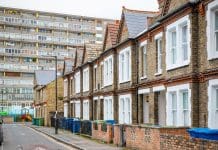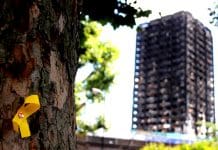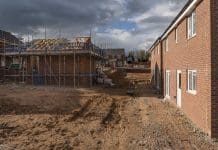An investigation by the regulator of social housing following the death of Awaab Ishak has found significant failings in how Rochdale Boroughwide Housing deals with damp and mould
An investigation by the social housing regulator has found significant failings in how Rochdale Boroughwide Housing (RBH) deals with dampness and mould across the organisation, even beyond the specific findings regarding the death of toddler Awaab Ishak.
As a result, RBH has breached the regulator’s consumer and governance standards.
Levelling up secretary Michael Gove previously stripped RBH of £1m funding from the Affordable Homes Programme (AHP 2021-26) pending the results of the social housing regulator investigation.
The social housing regulator investigation found a lack of ‘fairness and respect’ for tenants
The investigation found that RBH waited nearly two years after Awaab Ishak’s death to check for damp and mould in other homes on the estate.
When they did eventually check, they found hundreds of tenants living with damp and mould. Awaab Ishak’s death should have alerted RBH to the safety risks for its tenants, but it failed to act quickly and protect more tenants from potential harm.
RBH made incorrect assumptions about the cause of damp and mould in Awaab Ishak’s home and failed to act to resolve the issues. RBH did not treat Awaab Ishak’s family with fairness and respect, and the regulator does not have confidence that RBH is treating other tenants with fairness and respect.
Internal and external communication at RBH were ineffective
Wider failings within RBH meant that it gave the regulator inadequate information about damp and mould shortly after Awaab Ishak’s death. The widespread issues in its homes which it later found severely undermine RBH’s credibility and exposes significant failings in the way it treats damp and mould.
RBH has weaknesses in its IT and internal communications, which led to vital information being missed. The repairs team were unaware of the concerns raised by Awaab Ishak’s healthcare worker, which may have enabled them to identify the risks earlier.
The regulator expects RBH to take urgent action to address these failings and will take enforcement action if necessary.
In particular, the regulator is pushing RBH to improve the way it is run and to fix its approach to managing damp and mould in tenants’ homes.
The regulator expects all social landlords to learn lessons from the case
The regulator’s findings send a clear message to all social landlords that:
- Housing associations and councils need to ensure their homes are well maintained and of a decent standard.
- Landlords need to have systems in place to ensure their homes are free from hazardous levels of damp and mould, and deal with issues promptly and effectively.
- Social landlords need to listen to their tenants’ concerns, understand their needs, remove barriers to accessing services and respond promptly when they need to put things right.
The regulator wrote to every social landlord on 22 November 2022 to highlight landlords’ responsibility to protect tenants from hazardous damp and mould. Landlords need to submit evidence to the regulator by 19 December to show they are dealing with damp and mould appropriately. If this evidence isn’t provided, the regulator will take appropriate action.
Tenant complaints must be taken seriously
Fiona MacGregor, RSH’s chief executive, said:
“Our investigation reveals significant failures in the way RBH manages damp and mould in its homes, resulting in harm to tenants. The tragic death of Awaab Ishak should have led to action to establish wider risks, but RBH failed to respond quickly or effectively. This is unacceptable. RBH needs to address the issues we have found and we will take further action if it fails to do so.
“Our judgement sends a clear message to social landlords that they must deal with damp and mould as the serious hazards that they are, treat tenants with respect, and take their concerns seriously.”














